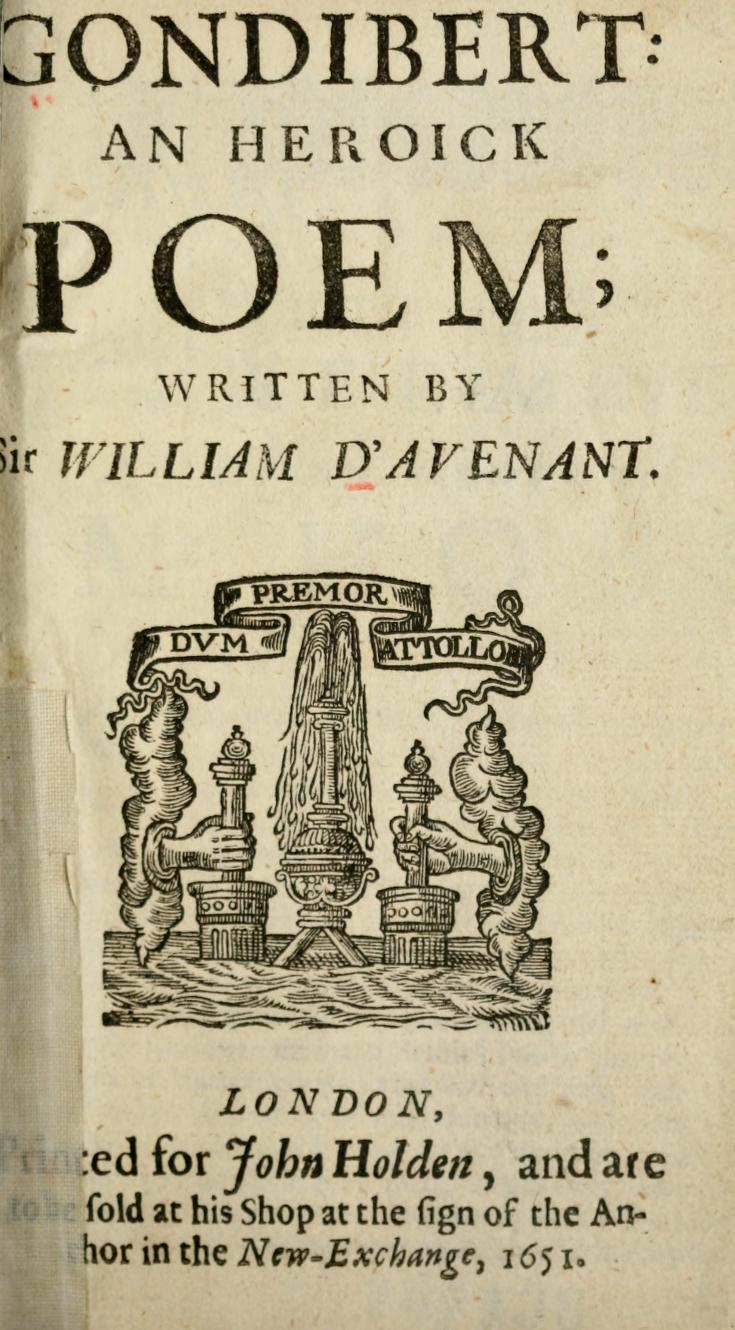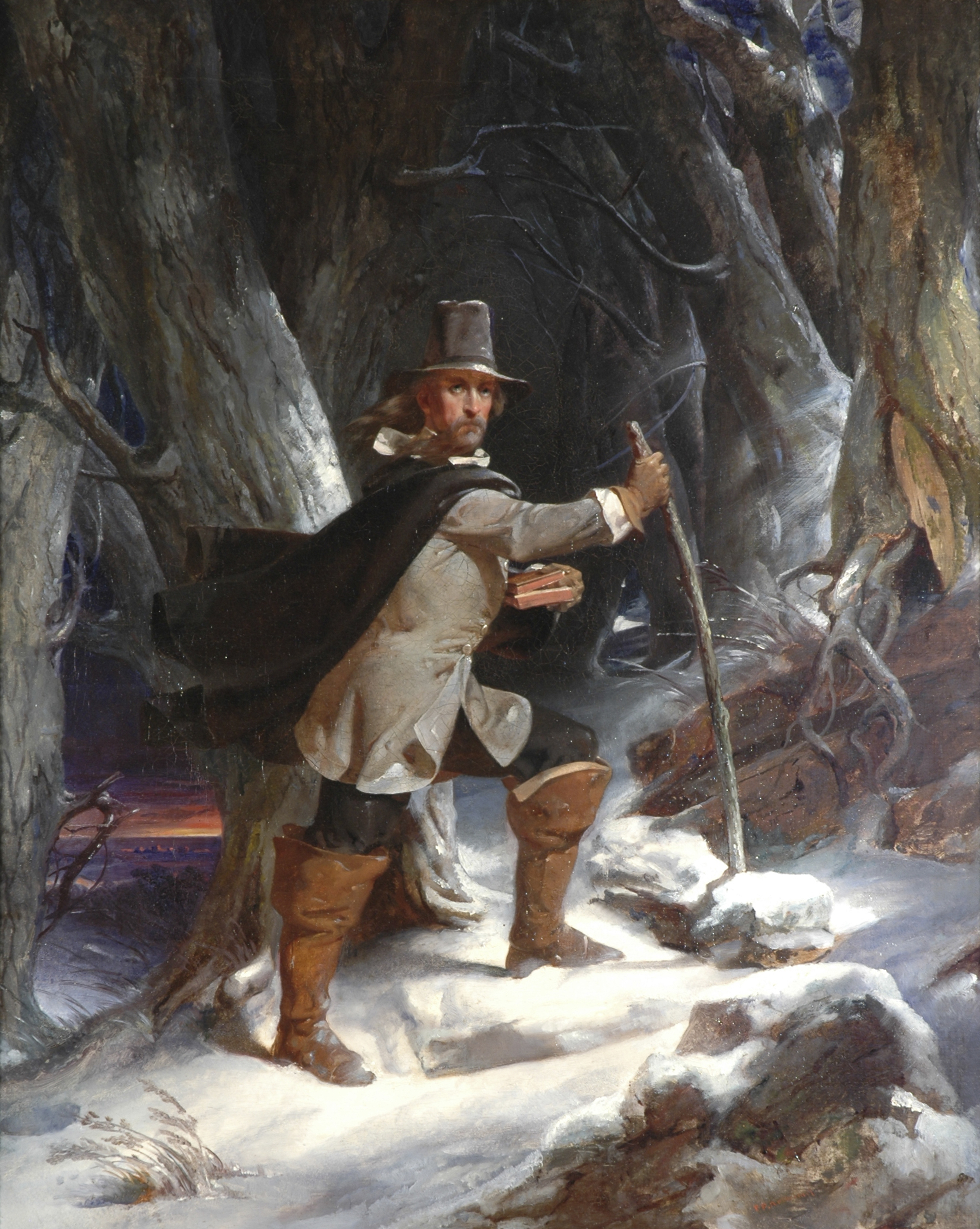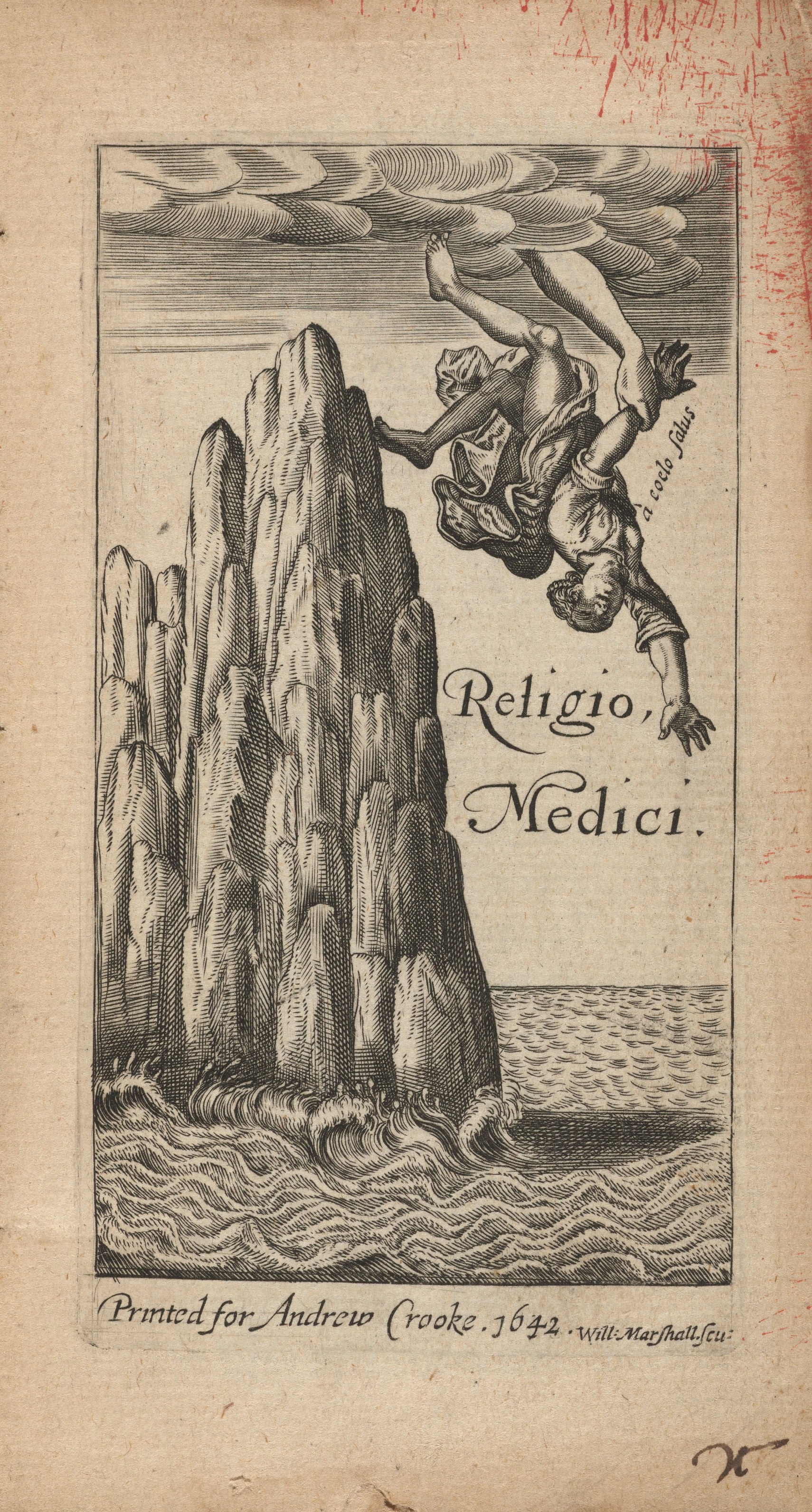|
1643 In Literature
This article presents lists of the literary events and publications in 1643. Events *May/June – René Descartes, having had his philosophy condemned by the University of Utrecht, begins his long correspondence with Princess Elizabeth of Bohemia. *June 16 – The Parliament of England issues the Licensing Order of 1643 to control the press – the action against which John Milton protests in his '' Areopagitica'' of the following year. *August 1 – The first of Milton's divorce tracts is published, anonymously and unlicensed. *''unknown dates'' **Cardinal Mazarin opens the Bibliothèque Mazarine in Paris to scholars. **The medieval Icelandic manuscript Codex Regius comes to light, in the possession of Bishop Brynjólfur Sveinsson. **Miyamoto Musashi begins dictating ''The Book of Five Rings ( Go Rin No Sho)''. **Francis Bacon's ''New Atlantis'' and Tommaso Campanella's ''Civitas Solis'', '' The City of the Sun'', are published together in a volume titled ''Mundus Alter et Id ... [...More Info...] [...Related Items...] OR: [Wikipedia] [Google] [Baidu] |
New Atlantis
''New Atlantis'' is a utopian novel by Sir Francis Bacon, published posthumously in 1626. It appeared unheralded and tucked into the back of a longer work of natural history, ''Sylva Sylvarum'' (forest of materials). In ''New Atlantis'', Bacon portrayed a vision of the future of human discovery and knowledge, expressing his aspirations and ideals for humankind. The novel depicts the creation of a utopian land where "generosity and enlightenment, dignity and splendour, piety and public spirit" are the commonly held qualities of the inhabitants of the mythical Bensalem. The plan and organisation of his ideal college, Salomon's House (or Solomon's House), prefigured the modern research university in both applied and pure sciences. Publication history ''New Atlantis'' first appeared in the back of ''Sylva Sylvarum'', a rather complex work of natural history that was published by William Rawley, Bacon's secretary, chaplain and amanuensis in 1626. When ''Sylva'' was entered into t ... [...More Info...] [...Related Items...] OR: [Wikipedia] [Google] [Baidu] |
William Davenant
Sir William Davenant (baptised 3 March 1606 – 7 April 1668), also spelled D'Avenant, was an English poet and playwright. Along with Thomas Killigrew, Davenant was one of the rare figures in English Renaissance theatre whose career spanned both the Caroline and Restoration eras and who was active both before and after the English Civil War and during the Interregnum. Davenant was reportedly a godson of fellow playwright William Shakespeare, and he wrote a memorial ode for his godfather when he was only 12-years-old. Later in life, he was rumored to be Shakespeare's illegitimate son. In 1638, Davenant replaced Ben Jonson as the new Poet Laureate. Davenant was a Royalist in the English Civil War and was sentenced to death by the Parliamentarians in 1650. His life was reportedly spared by the intervention of a fellow writer, John Milton. Biography Early life Davenant is believed to have been born in late February, 1606 in Oxford, the son of Jane Shepherd Davenant and John Da ... [...More Info...] [...Related Items...] OR: [Wikipedia] [Google] [Baidu] |
Polyeucte
''Polyeucte'' is a drama in five acts by French writer Pierre Corneille. It was finished in December 1642 and debuted in October 1643. It is based on the life of the martyr Saint Polyeuctus (Polyeucte).Project Gutenberg etext of ''Polyeucte'' The drama is set in ancient (in a city, Melitene, which is in present-day ) during a time when were persecuted there under the |
Pierre Corneille
Pierre Corneille (; ; 6 June 1606 – 1 October 1684) was a French tragedian. He is generally considered one of the three great 17th-century French dramatists, along with Molière and Racine. As a young man, he earned the valuable patronage of Cardinal Richelieu, who was trying to promote classical tragedy along formal lines, but later quarrelled with him, especially over his best-known play, '' Le Cid'', about a medieval Spanish warrior, which was denounced by the newly formed for breaching the unities. He continued to write well-received tragedies for nearly forty years. Biography Early years Corneille was born in Rouen, Normandy, France, to Marthe Le Pesant and Pierre Corneille, a distinguished lawyer. His younger brother, Thomas Corneille, also became a noted playwright. He was given a rigorous Jesuit education at the ''Collège de Bourbon'' ( Lycée Pierre-Corneille since 1873), where acting on the stage was part of the training. At 18 he began to study law, but ... [...More Info...] [...Related Items...] OR: [Wikipedia] [Google] [Baidu] |
Gero (book)
, in the orthography of the day) is a 17th-century ascetic book in Basque written by Pedro Agerre, better known as Axular. It is considered one of the masterpieces of classic Basque prose and literature altogether. Its accomplished, elaborate language in classic Lapurdian dialect turned it into a writing model for later writers from Labourd. It was published in Bordeaux in 1643 under the patronage of Bertrand D'Etchauz, the Basque archbishop of Tours (1617-1641). The book was written after the period of the harrowing "witch" persecution (Pierre de Lancre's intervention in Labourd). While the title's tagline reads "divided into two parts", only the existence of one book has been attested. Basque scholar Pierre Lafitte claimed that both parts had been merged into one. By contrast, former president of the Basque Language Academy Luis Villasante held that the second part had been actually lost.{{cite web , last1=Aierbe , first1=Axun , title=Gero (1643) , url=https://aunamendi. ... [...More Info...] [...Related Items...] OR: [Wikipedia] [Google] [Baidu] |
Pedro Agerre
Pedro Agerre, best known as ''Axular'', was one of the main Basque writers of the 17th century. His main work was ''Gero'' (''Later''), published in 1643, an ascetic book written with elaborate prose and composed following the traumatic period of the Basque witch trials (1609-1613). Despite hailing from the house Axular, located in Urdazubi/Urdax (Navarre), he was appointed to the neighbouring parish of Sara (Labourd), where he stood out in his preaching. On the maternal line, he was related to Martin Azpilkueta and Francis Xavier Francis Xavier, Jesuits, SJ (born Francisco de Jasso y Azpilicueta; ; ; ; ; ; 7 April 15063 December 1552), venerated as Saint Francis Xavier, was a Kingdom of Navarre, Navarrese cleric and missionary. He co-founded the Society of Jesus .... External linksOnline edition of ''Gero'' Basque writers Basque-language writers 1550s births 1644 deaths 17th-century Spanish writers {{spain-writer-stub ... [...More Info...] [...Related Items...] OR: [Wikipedia] [Google] [Baidu] |
A Key Into The Language Of America
''A Key into the Language of America'' or ''An help to the Language of the Natives in that part of America called New England'' is a book written by Roger Williams in 1643 describing the Native American languages in New England in the 17th century, largely Narragansett, an Algonquian language. The book is the first published colonial study of a Native American language in English. History Author Roger Williams was a Puritan who was banished from Massachusetts Bay Colony and founded Providence Plantations which grew into the Colony of Rhode Island. He believed that the king had no right to grant title to Indian land without paying for it. He interacted extensively with the Narragansett and Wampanoag tribes as a missionary, friend, and trader. He extolled some elements of Indian culture as superior to European culture, and he wrote a complementary poem at the end of each chapter within the book. According to J. Patrick Cesarini, Williams also published the book to rebut Massa ... [...More Info...] [...Related Items...] OR: [Wikipedia] [Google] [Baidu] |
Roger Williams
Roger Williams (March 1683) was an English-born New England minister, theologian, author, and founder of the Colony of Rhode Island and Providence Plantations, Providence Plantations, which became the Colony of Rhode Island and Providence Plantations and later the Rhode Island, State of Rhode Island. He was a staunch advocate for religious liberty, separation of church and state, and fair dealings with the Native Americans. Initially a Puritan minister, his beliefs evolved and he questioned the authority of the Puritan church in enforcing religious conformity. He was expelled by the Puritan leaders from the Massachusetts Bay Colony, and he established Providence Plantations in 1636 as a refuge offering what he termed "liberty of conscience" making Rhode Island the first government in the Western civilization, Western world to guarantee Freedom of religion, religious freedom in its founding charter. His ideas on religious tolerance and civil government directly influenced the ... [...More Info...] [...Related Items...] OR: [Wikipedia] [Google] [Baidu] |
Philip Hunton
Philip Hunton ( 1600–1682) was an English clergyman and political writer, known for his May 1643 anti-absolutist work ''A Treatise of Monarchy''. It became a banned book under the Restoration. A Treatise of Monarchie (1643) At the time of publication, it provoked a much better-known rebuttal, the 1648 ''Anarchy of a Limited and Mixed Monarchy'' by Robert Filmer. It was part of a pamphleteering exchange initiated by the royal chaplain Henry Ferne. Hunton was among the few who attempted to chart a 'middle course' between the Royalists and the Parliamentarians. In his ''Treatise'', he cites both Charles Herle (a Parliamentary supporter) and royalist Henry Ferne (against whom much of the ''Treatise'' was directed). This was though only to contradict both, and chart a new position. He outlined a theory of active/passive obedience, and active/passive resistance, arguing that, unless the defense of the ''whole'' community is at stake, it is unlawful to actively/violently resist the m ... [...More Info...] [...Related Items...] OR: [Wikipedia] [Google] [Baidu] |
Kenelm Digby
Sir Kenelm Digby (11 July 1603 – 11 June 1665) was an English courtier and diplomat. He was also a highly reputed natural philosopher, astrologer and known as a leading Roman Catholic intellectual and Thomas White (scholar), Blackloist. For his versatility, he is described in John Pointer (antiquary), John Pointer's ''Oxoniensis Academia'' (1749) as the "Magazine of all Arts and Sciences, or (as one stiles him) the Ornament of this Nation". Early life and education Digby was born at Gayhurst, Buckinghamshire, England. He was of gentry stock, but his family's adherence to Catholic Church, Roman Catholicism coloured his career. His father, Everard Digby, Sir Everard, was executed in 1606 for his part in the Gunpowder Plot. Kenelm was sufficiently in favour with James VI and I, James I to be proposed as a member of Edmund Bolton's projected Royal Academy (with George Chapman, Michael Drayton, Ben Jonson, John Selden and Sir Henry Wotton). His mother was Mary, daughter of William ... [...More Info...] [...Related Items...] OR: [Wikipedia] [Google] [Baidu] |
Religio Medici
''Religio Medici'' (''The Religion of a Doctor'') by Sir Thomas Browne is a spiritual testament and early psychological self-portrait. Browne mulls over the relation between his medical profession and his Christian faith. Published in 1643 after an unauthorised version was distributed the previous year, it became a European best-seller which brought its author fame at home and abroad. It likely contains the first known English language reference to Zoroastrianism. It was translated into Latin, French, German, Dutch and Italian and was reprinted about eight times during the author's life-time. It speaks on the themes of the religion of a doctor arguing that doctors are not atheists and that religion is not incompatible with science. Themes Religion Structured upon the Christian virtues of Faith and Hope (part 1) and Charity (part 2), Browne expresses his beliefs in the doctrine of '' sola fide'', the existence of hell, the '' Last Judgment'', the resurrection and other te ... [...More Info...] [...Related Items...] OR: [Wikipedia] [Google] [Baidu] |





